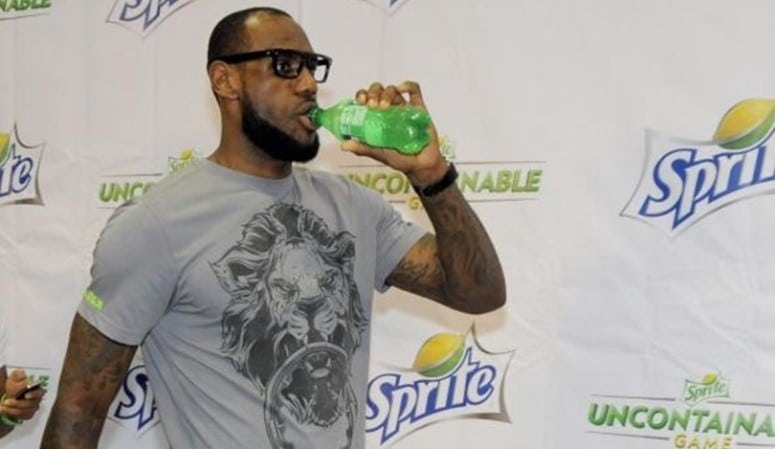Last Updated on December 30, 2020
You’ve signed up to Shopify and built out your first cart.
As soon as you finished, you started to wonder “how do I get people in here?” After reading the fantastic write-ups on how-to sell online, you hopefully have been improving your overall search presence, are getting active in niche communities and in social media, are building up a relevant e-mail list, and now have stumbled onto the concept of influencer marketing.
I know what you’re thinking…influencer marketing?
As a 20 year veteran of the online marketing community, let me assure you that in addition to actually marketing, our favorite past-time is coming up with new terms designed to re-explain old concepts; usually packaged with a new service being sold. In essence, influencer marketing is using someone else to tell your story. Simple examples usually include famous basketball players drinking a sugary substance in order to get others to buy the same sugary substance in order to be just like that famous basketball player. That said, in practice it can be so much more and much more attainable than paying $10m/yr in money you don’t have, and probably with a better overall ROI to boot.

There are several different types of influencer marketing campaigns you could employ based on your goals or KPIs (key performance indicators); before you get started, you should have a good understanding of what you want to accomplish. I would recommend never undertaking any marketing or business activity without having a specific goal attached to it, which hopefully is based on a sorted list of things you need to tackle.
1. Improve overall social / community visibility — Closest to branding and advertising concept is using influencers as a means to expand your overall product awareness. This is a typical strategy used by companies when launching a new product without a defined target buyer or as a mechanism to draw attention to new features / attributes. Launch a new line of coffee cups and not sure who is going to buy them yet? Generally targeting influencers that have mentioned drinking coffee and getting a mention is the simplified concept.
2. Sales via low key product placement — Have you ever seen an episode of Seinfeld? Product was subtly placed in most episodes without the public knowing; this is the digital equivalent. An influencer giving a video interview while sitting at a table and drinking coffee out of the coffee cup you just happen to sell. For this to work the product needs to be obvious in what it is and who sells it since the reviewer wouldn’t necessarily be calling attention to it. The FTC has since cracked down on this concept, requiring some degree of disclosure (which is not a bad thing) so for the most part you can skip worrying about how to work your product into the background.
3. Sales via influencer reviews — The most common use of influencer marketing is through reviews. Some reviews are paid, some amount to simply the cost of product plus shipping, and some are unprompted. Since we’re discussing influencer marketing as a strategy, only the first two are relevant here. This strategy is extremely effective in some cases; if a known influential coffee drinker snaps a photo of your coffee mug and posts on twitter that it is just the right size and keeps the coffee at the perfect temperature, the influencer has provided a product review. Some reviews are more in-depth, such as YouTube unboxing videos and promotion blog posts; there’s no limit to how deep a review can get with the right influencer that genuinely believes in your product.
4. Sales via influencer promoting a giveaway/contest/promotion — In my opinion, this strategy is not used enough. What is going to be more impactful: the influencer reviewing your coffee mug or the influencer that reviews your coffee mug and says the first 10 people to use “GIVEMEFREECOFFEE” code on your Shopify store will get a free coffee sampler kit? When done correctly, that is the stuff of a viral campaign because you’re getting not just a review, but an incentive to share the review.

Now that you have figured out the type of influence campaign works best for your goals, you need to figure out which is the right type of influencer for your campaign? Not all influencers are built equal.
1. Celebrity — In a perfect world, a celebrity with 1M+ followers on Twitter would be a regular buyer of your coffee mugs and eager to post about them non-stop. The reality though is celebrities are highly compensated for the vast majority of their product related tweets/shares/snaps/instagrams; in the past year alone dozens of agencies have been created to specifically manage celebrity social presences, charging top dollar. This isn’t to say that it is impossible for a small business selling coffee mugs like you to snag a celebrity endorsement; it is simply less likely. Additionally, there is much more noise in celebrity influencer marketing, unless that celebrity also happens to be a subject authority.
2. Authority — In a sense, authorities can be considered minor celebrities in that they are highly respected in certain fields. If I tweet about a new SEO tool that changed my life, the tool is going to see at least a modest increase in sales since I’m a known quantity within the search community. If I tweet about my favorite motor oil…meh. Authorities that aren’t necessarily celebrities are generally more accessible than their non-authoritative celebrity brethren, but are also more selective in that they have a reputation to uphold since they are looked up to for their subject matter expertise. Getting reviews from authorities is possible, but expect them to be potentially more critical of the product.
3. Customer — Speaking of product, you know who has seen it before? Your customer. Let’s say Jill bought your coffee mug last month and you know from Google Analytics and Lucky Orange that she has been back since and is looking at new product. With a little effort in checking out her influence reach and a quick email to her, you could potentially land an influencer that is not only going to review your product favorably (probably — she bought and is coming back for more), but is obviously not a talking head celebrity. Since Jill is a coffee drinker and loves your mugs, her peer level influence is going to act like a mini authority amongst her network of other coffee drinkers.
Are you ready? You know what kind of campaign and have a general idea of whom you want to have representing you on the campaign, so how do you start and contact these influencers?
1. Push strategies: email, Twitter DMs, phone — There’s little substitute sometimes for hard work. Tracking down contact information for an influencer and asking them to participate in your campaign is the idea here. Don’t be discouraged with a low response and acceptance rate; just like outbound sales, it is a numbers game with a constant need to push in order to get the results you want.
2. Pull strategies: place an offer and get attention to it — Also known as an inbound strategy, you could create a special offer page just for potential influencers, share it on your site, over email, and social channels, and then correspond with all the message responses that come in.
The two strategies aren’t mutually exclusive. If you were to spend a great deal of time building up an email list of potential consumers and instead of trying to directly convert them into paying customers, you took an indirect route by getting a fraction of them to run a giveaway review campaign on your behalf, you might attract direct customers immediately as well as some later in the sales cycle. Additionally, you’ve added more customers simply due to the giveaway. The entire process can be done manually with great success. Or, if you want to use a service to manage the influencer offer creation and communication process, check out our site at Intellifluence.com and save countless hours. :)

Joe, CEO and Co-Founder of Intellifluence, has over 25 years of experience in SEO, leading several successful marketing companies and providing expert consultation. He is the author of The Ultimate Guide to Using Influencer Marketing, which is available as an eBook or in print.






